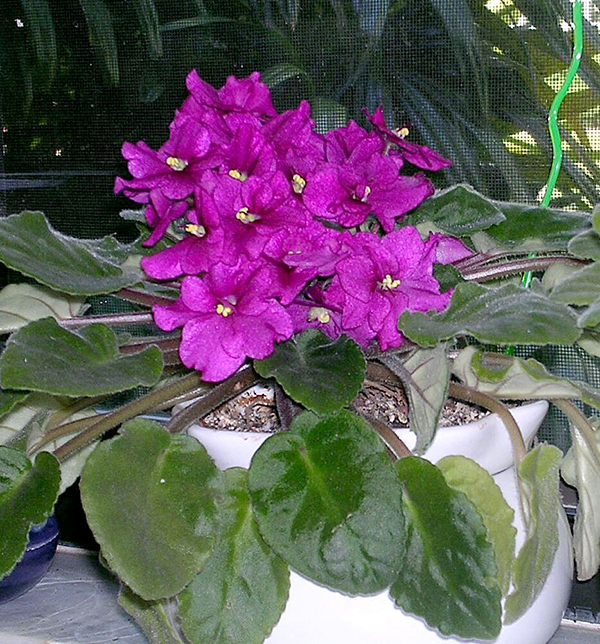African violets are one of the most exquisite flowering house plants exhibited in many homes across the world. Admired by novice and experienced gardeners alike, the Saintpaulia (botanical) was named for Baron Walter von Saint Paul who discovered the plant in the East African country of Tanzania in 1892. It is commonly called “African violet” due to its resemblance to true violets. There are now thousands of hybridized species of the African violet. You can find them in a variety of colors ranging from deep purple to white and in two-color variations. The key to their beauty is all in how you care for them.
African violets grow best in small pots. This makes them ideal for persons with limited space for plants. The soil in those pots must be loose and slightly acidic. You can purchase ready-made potting soil just for African violets at your local garden store or mix up your own. You can find out more about soil mixture on to the UGA Cooperative Extension website: (web link). When watering your African violets, thoroughly water over the top of the soil and let the water drain off, but avoid wetting the leaves of the plant. Never allow your plant to sit in the water for this can cause salt buildup in the soil and that can be harmful to the roots. Also, make sure that water does not get on the leaves for this can cause “ring spots.” The key is to keep the soil moist, not soggy wet or bone dry.
Ensure that your African violet receives proper lighting, by using artificial lighting (like in an office setting ) or on a window sill with an East or South direction and no direct sunlight. Choosing a setting that has great air circulation and non-direct sunlight is ideal. Stale stagnant air can cause mildew to form on the leaves and flower of the plant. If you find that the crown of your plant is growing in one direction, you may want to turn the plant slightly to ensure that the plant is receiving equal lighting.
The active growing season for African violets is usually in the spring, summer and fall, so it is wise to fertilize your plants at this time. Water soluble fertilizer for blooming plants is a good choice or you can chose a fertilizer specifically for African violets. If you notice that the leaves are turning a light green and your plant is growing slowly, then fertilization is recommended.
Once you have mastered the care of your African violet, you may decide to share them by propagating. This can be done by rooting the leaves. Simply cut a 1-1/2 inch leaf stem with the leaf attached, place the stem into a small pot of soil, water thoroughly for moisture, and set the potted plant where it will be in a steady temperature between 65-75 degrees. African violets enjoy a bit of humidity and roots should appear on your cutting in about 4-6 weeks. In approximately 6-8 more weeks, new leaves should appear. If you would like to learn more about African Violets and Orchids and their culture, join Paulding County Master Gardener Extension Volunteers on Thursday, August 27 at 10 am a First Baptist Church in Dallas for a program from Cobb Master Gardener, Claudia Constantine.
The author of this article, Vannetta Iddrisu, is a Paulding County Master Gardener Extension Volunteer. As representatives of the University of Georgia Cooperative Extension, Master Gardener Extension Volunteers are trained experts, who answer questions about home horticulture, sustainable landscaping, and environmentally friendly gardening practices using unbiased, research-based information from the University of Georgia. For more information on gardening in Paulding, contact a Master Gardener or the County Extension Agent at the Paulding County Cooperative Extension Office at 770-443-7616 or check us out online at www.ugaextension.com/paulding.





















